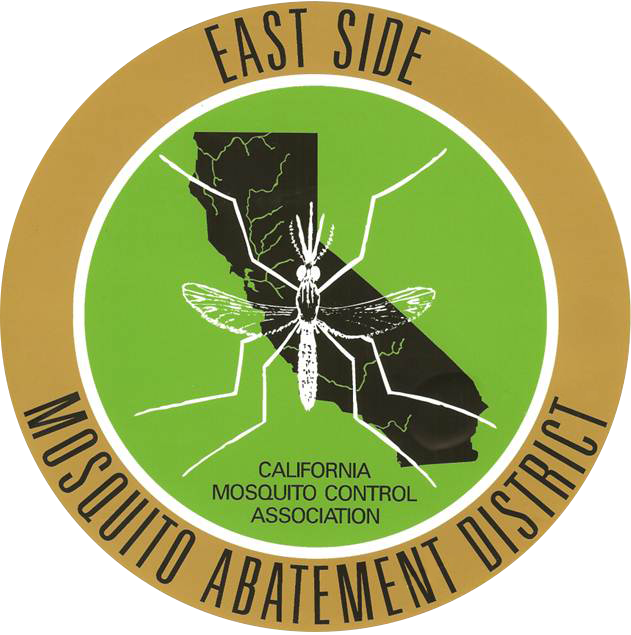Vector-Borne Diseases
Vector-borne diseases are diseases transmitted to humans or other animals by a disease-carrying organism, like a mosquito. These diseases can be caused by either a virus, bacteria, or parasite. According to the World Health Organization, vector-borne diseases account for 17% if all infectious diseases and cause more than 700,000 deaths each year. Many of these diseases are preventable through personal protection measures and public control measures. It is important to have a general awareness of common diseases in your area in order to best protect yourself and your community from harm. Listed below are a few vector-borne diseases you may see in Stanislaus County.
If you suspect you have any of these disease, please contact your health care professional immediately. If you would like to know better ways to help protect yourself from mosquitos and the diseases they carry please vist our "Ways to Protect Yourself" page.
West Nile virus (WNV) is the most common mosquito transmitted disease in this county. It is monitored closely by both county and state officials. In nature, West Nile virus cycles between Culex mosquitoes and birds. However, some birds can develop high enough levels of the virus in their bloodstream that biting mosquitos can get infected and end up transmitting it to humans or horses. Fortunately, both horses and humans are considered “dead-end” hosts. This means that they will not develop high enough levels of virus in their bloodstream to pass the virus on to other biting mosquitos. In rare instances, humans can contract West Nile from blood transfusions or organ transplants.
Symptoms: Only about 20% of patients with West Nile virus will show symptoms with older and immunocompromised patients being at the highest risk. Common symptoms include headaches, fever, joint pain, malaise, nausea and vomiting. Symptoms usually develop 3-14 days after being bitten and can last anywhere from a few days to a few months. Less than 1% of people infected will develop neurological symptoms such as encephalitis or meningitis. These cases may cause permanent nervous system damage and in rare occasion can be fatal.
Treatment: There is no specific treatment for West Nile virus. Some symptoms will go away on their own or can be managed with over-the-counter medication. Severe cases often require hospitalization for supportive care. Horses can be vaccinated against this virus as preventative care. Please contact your veterinarian for more information on that vaccine.
If you would like more information on this virus, please visit California State's West Nile website.

The Western equine encephalomyelitis (WEE) virus is transmitted by mosquitoes when they feed on infected passerine birds, like finches and sparrows, or on infected rabbits. This virus can lead to symptoms in both humans and horses. The clinical term “encephalomyletitis” means inflammation of the brain. Individuals with mild symptoms may encounter conditions like headaches, fatigue, and fever, while those with severe symptoms may exhibit high fever, confusion, weakness, and even coma. In some cases, it can be fatal. Although there is no specific treatment for Western equine encephalitis, supportive care can be provided for severe symptoms. Fortunately, human cases have rarely been detected in recent years in the county. However, it is still considered a risk in agriculture areas and small towns. Horses can receive a preventive vaccine against this virus, and for more information on this vaccine, please consult your veterinarian.
The Saint Louis encephalitis virus (SLE) closely related to West Nile virus and is transmitted by Culex mosquitoes when they feed on infected passerine birds like finches or sparrows. The majority of infected humans develop no symptoms. However, those that due develop symptoms usually develop them abruptly. Symptoms often began as headaches, dizziness, and generalized weakness. As the virus progresses, these symptoms can turn into stiff neck, confusion, and tremors as the central nervous systems gets infected. It is fatal in 5-20% among patients diagnosed. The risk of developing severe or fatal symptoms increases with age. There is no specific treatment for this disease. Severe cases often need to be hospitalized to receive supportive treatment. Human cases are not common in the county, but those living in urban-suburban areas are at the greatest risk and should preform preventative care to avoid infection.
If you would like more information on this virus, please visit the CDC's website.

Heartworms in a disease caused by the filarial worm Dirofilaria immitis and spread between infected animals by mosquito bites. The adult worm lives in the blood vessels of lungs and the heart of infected animals. Many pets such as dogs, cats, and ferrets are all susceptible to this disease. Because dogs are the natural host for this worm, they are at greatest risk for developing symptoms and severe side effects. Please contact your veterinarian if you suspect your pet has heartworms or to discuss regular preventative methods.
If you would like more information on this disease, please visit the American Heartworm's Society website.


